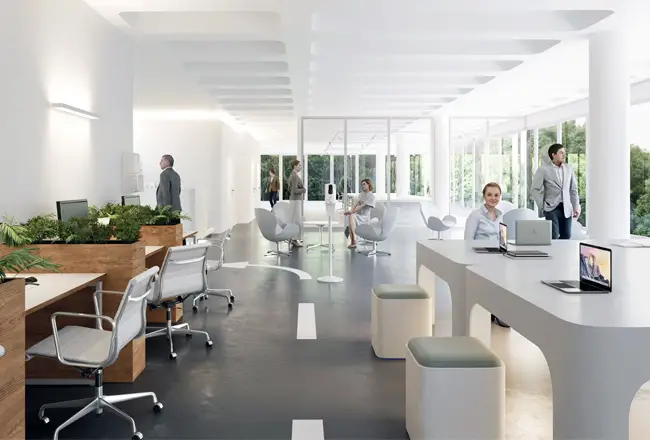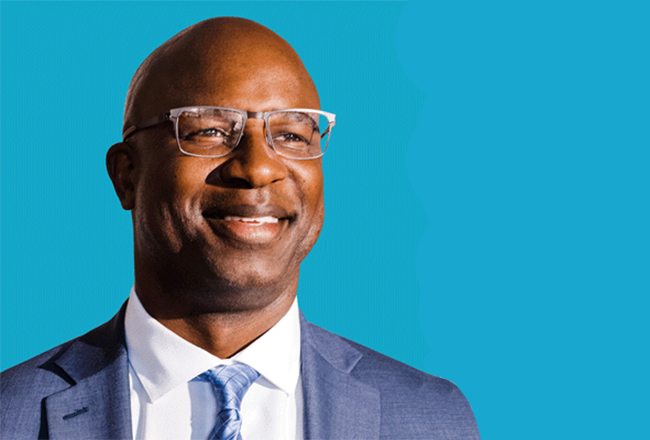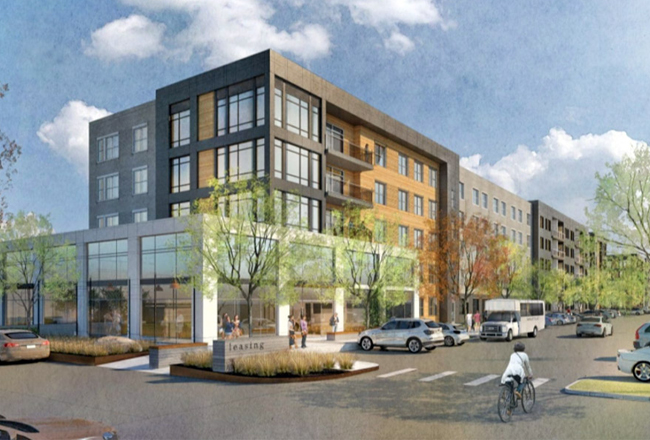As offices struggle with how to safely conduct business in the COVID-19 era, a new Easton firm is stepping up with an array of services and resources to create what it calls “agile” workspaces.
DistanceDesigns at 410 Morehouse Road is an offshoot of Brooklyn design firm Stewart-Schäfer. Originally conceived as a way of helping offices update their spaces to more comfortably accommodate staff and evolving technologies, DistanceDesigns was fast-tracked practically overnight, according to co-founder and COO James Veal, whose wife Christine Stucker is co-founder and creative director.
Stewart-Schäfer having succeeded with modernizing a number of retail and office spaces in New York ”” clients have included H&M, Elle and Converse ”” Veal said, “We started to get a lot of our retail clients coming to us and saying, ”˜What do we do? How do we reopen?”™ Like every interior designer in the world, solving problems and addressing each client”™s needs comes with the territory.”

DistanceDesigns recently conducted a survey through Pollfish, which questioned 600 participants ”” all of whom are currently working remotely ”” which found nearly 32% identifying “the inability to social distance” and nearly 39% saying their overall “health and well-being” were their biggest concerns. In addition, 69% of respondents said they would like to see design changes in their offices beyond health and safety measures.
“With traditional design, you pretty much follow a traditional model,” Veal said. “You put in this number of desks for that number of employees, along with the appropriate number of meeting rooms.
“But things are more complex now, and not just because of the coronavirus,” he said. “Besides looking at the number of employees occupying a space, you have to look at how they interact with that space and with each other, in order to allow them to do their best work.”
Veal said that DistanceDesigns”™ method of achieving that balance is based upon three pillars: Removing physical hazards; delivering a space suited to the needs of a flexible, sustainable work environment for the future; and implementing policy and processes to reinforce the physical control of hazards and to promote an adaptable working atmosphere.
“A lot of what we do is about data collection,” Veal said. “The more information we can get upfront, the better. When and where does each employee really want to work?”
The “agility” that the company promises comes from the need to address an oft-changing situation. “Things may change quickly in regards to health and safety. You don”™t know what the next health risk might be in the future, so we want to help our clients adapt as changes occur.”
The firm is now completing the design for a 2,700-square-foot commercial space in New York City, Veal said. “They were already doing social distancing and had signs in place,” he said. “But we came in and identified 63 common touchpoints. You can”™t get rid of all of them, but we brought that down to four. It was an overwhelmingly positive experience.”
Simply putting a “Please Sanitize Before Use” sign next to a door handle “is not going to work,” he said. “What we did instead was to remove the handles from the doors and add automated light switches. Today you can integrate technology with devices to eliminate a lot of traditional things.”




















